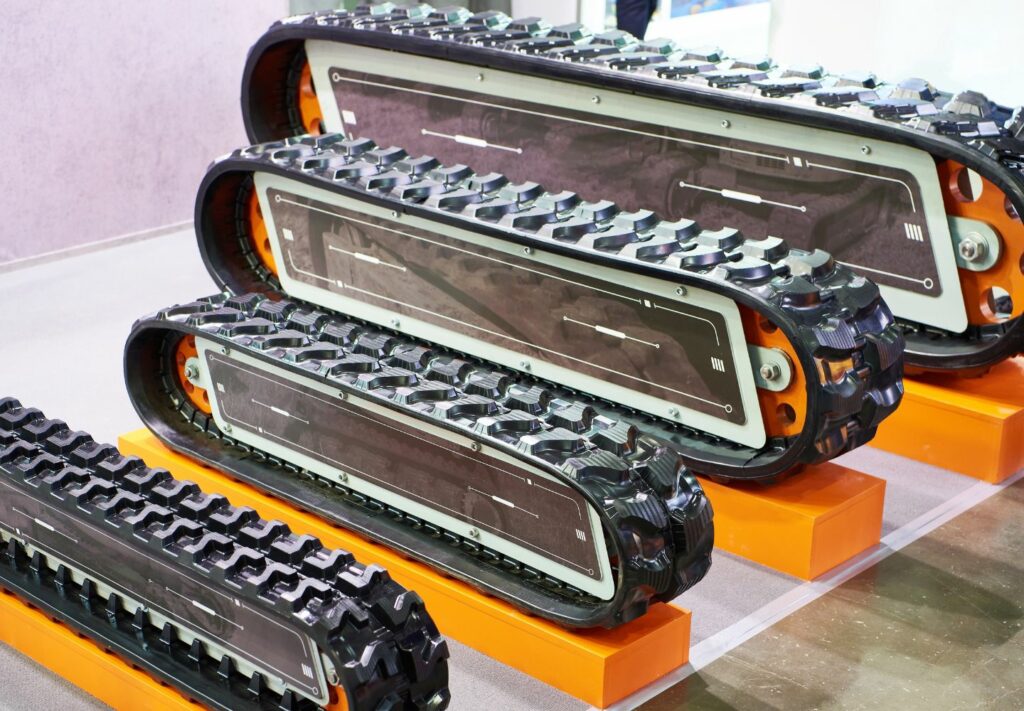How to find the right rubber track size for my equipment

It doesn’t matter whether it’s for a mini-excavator or compact track loader, replacing the rubber tracks on your equipment can be an expensive undertaking. When it’s time to replace your rubber tracks, you want to make sure you’re getting the right ones for your machine. Fitting improper sized tracks will result in both premature track failure and undue strain on the undercarriage, both of which will lead to costly repairs or replacements.
When you remove your already fitted tracks, there will be a stamp with sizing information. Use this to choose the correct sized track to fit on your machine. If the sizing information on your old track has worn out, you can do some simple maths to find the correct rubber track sizes or refer to a rubber track size chart for precise measurements.
How to measure rubber track sizes
To identify the right replacement rubber track size for your equipment, you will need to complete the following steps.
1. Identify your equipment
Before beginning anything, you need to know what kind of equipment you are working with. This will help to ensure you get the correct size and type of track. Identify the make, model, and year of the equipment.
2. Measure the width
Measure the width of the track in millimeters.
3. Measure the pitch
The pitch is the distance between two links. Measure this distance in millimetres.
4. Count the links
Count the number of links or teeth around the outside of the track.
5. Apply the standard formula
Use the above measurements and apply them to this formula to obtain the correct size for your rubber track fittings:
Width (mm) x Pitch (mm) x # of Links.
For example:
460mm x 96mm x 65 links
This will bring you the size ‘460x96x65’. When looking at product listings from track suppliers who have rubber tracks for sale, they will list the size of the track in this format (WIDTH x PITCH x LINKS).
Metal or steel core vs non-metal core
When selecting MTL rubber tracks, mini excavator tracks, compact track loader tracks, or any other excavator tracks, it is important to know if you require metal core tracks or non-metal core tracks.
Metal core: incorporates steel plates and cables within the rubber belt. This creates a steel skeleton design that provides maximum toughness and firmness, making it ideal for heavy-duty applications.
Non-metal core: Utilises polyester cables to reinforce and strengthen lighter-weight tracks. This design offers improved flexibility and is commonly used on multi-terrain loaders.
To find out how to fit your mini excavator tracks or compact track loader tracks, please view our instructional video on how to replace rubber tracks.
For more information on obtaining the correct size for your excavator rubber tracks, or tracks of any other equipment, please contact the team at Tradefaire by giving us a call at 1300 915 078 or filling out our online contact form.
